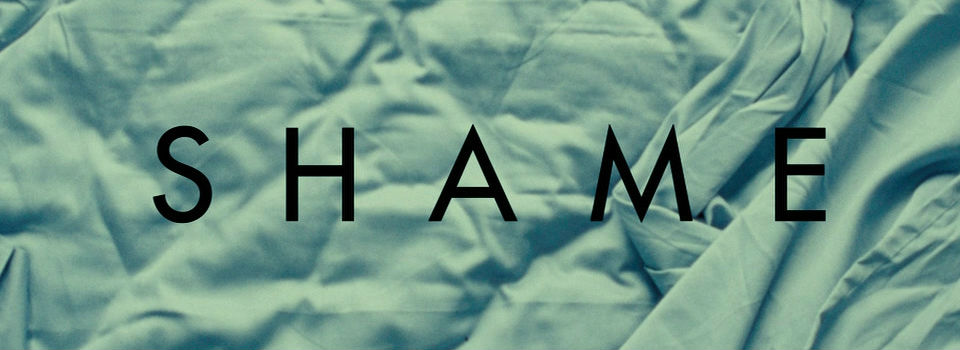
This week we welcome guest writer, Maggie White, who lost her brother to suicide. Maggie offers a unique perspective as she is not only a survivor, but someone living with mental illness. Born and raised on Chicago’s south side, Maggie resides in Downers Grove, Illinois, with her husband, Sean and their five children, Colin, Moira, Shannon, Aileen and Patrick. She has just published her first children’s book A Christmas Guest, a story which she hopes will inspire both children and adults to show small acts of kindness and compassion towards others. She is passionate about mental health advocacy awareness as well as providing resources to the millions suffering under the burdens of mental illness. Sometimes, all it takes is one person, one guardian angel in human form, to reach out to another and pull that person out of darkness. Hopefully, the older the tribe of children gets, the more time she’ll be able to devote towards writing and mental health advocacy. Thank you Maggie for sharing your story and educating us all on what mental illness truly looks like.
“SHAME ON YOU!”
“Shame is a soul-eating emotion.”
-C. G. Jung
Two of the biggest barriers to treating mental illness successfully are 1.) shame and 2.) stigma. But it’s the old “chicken and the egg” argument; what came first?
First, let’s define shame versus guilt, as the two are often confused. Guilt is when you feel you’ve done something bad. Shame is when you believe you are bad. Guilt can help shape our morals, principles and decisions, as well as open doors to forgiveness. Shame, on the other hand, is “the swamp land of the soul,” as Dr. Brene Brown, a well-known psychologist and motivational speaker, noted in her 2012 TedX talk. Like mold thrives on moisture and darkness, shame thrives on secrecy, silence, isolation and fear. Stigma deepens shame even further, just as shame increases the power of stigma.
In his article, “Mental health and Stigma” for Psychology Today, Dr. Graham L. Davey separates stigma into two categories: social stigma and self-stigma. Social stigma does not discriminate against any, regardless of race, age, or gender. It even wiggles its way into the medical community and the mentally ill, themselves. Popular culture and mass media don’t help much, either. Psycho. Nuts. Dangerous. Difficult. Anti-social. Weirdo. Whack job. Crazy. Debby Downer. Negative Nelly. Emotional Vampire. This is how mental illness is perceived today. And it’s just the beginning of the label list!
Even more destructive than social stigma, is self-stigma- believing yourself to be irrevocably flawed, to be beyond help, to agree with whatever negative labels social stigma throws at you. Self-stigma is the birthplace of shame. And shame and stigma have been doing a destructive, cyclical dance for too long.
My Story
June 2009: I was diagnosed with Major Clinical Depression and Generalized Anxiety Disorder. I was 28 years old.
January 30th, 2013, 3:30p.m.: My little brother, Tommy, took his life.
When I was first diagnosed with mental illness, I actually felt relief. Back then, I thought I understood the pain of shame very, very well. At 12 years old, shame became my roomie. I was bullied in middle school, which started a long pattern of self-loathing and isolation for nearly 16 years. Quite honestly, I never even thought that I might be suffering from mental illness. Instead, I told myself I was just trying to get attention, that I was being a melodramatic hypochondriac, that I was unlikable and that I didn’t blame anyone for not talking to me. I wouldn’t want to talk to me either. When I finally sought professional treatment, and the medications started working, I actually asked my doctor if the pills were creating a pseudo-personality.
No!’ he laughed. “If you were mentally healthy, you would hardly respond to the pills at all. It would be like taking a sugar pill. The fact that you are responding should tell you how deeply you were suffering. Now your brain has room to let your true self out!”
I was thrilled. All my life, I thought I had just been dealt a crummy personality. I remember growing up and hearing loved ones say, “Well, you’ve always been a pessimist” or “You’ve never really been the happy-go-lucky type.” I believed them. It was how I defined myself. I didn’t share my real self- my thoughts or my feelings- with many people because I was ashamed of them. I would look in the mirror and Shame looked back.
“Who the heck do you think you are anyways?” the reflection sneered. “You’re nothing. No one. Your presence is annoying, so stop bothering people.”
Shame made me feel like I had to constantly apologize… for everything. I apologized when I let someone walk in the door ahead of me. I apologized when I approached anyone with a question. I apologized when someone asked me for something and I hadn’t already perceived their need. Looking back, I lived 16 years of my life as one big apology. With medication, good therapy and a lot of support, I learned to fight back shame. I’m still here. But my brother is gone.
Tommy knew shame too. I didn’t know how big and bad his shame was until it was too late. In his last letter to us, he wrote, “The past 12 years of my life have been a complete mess and the memories of that will never go away.” Shame had possessed him and completely taken over his life.
Secrecy. Silence. Fear. Isolation.
Tommy suffered from Bipolar 1, though he rarely took the prescribed medication, or even told his psychiatrist what he truly felt. He obsessively researched every single, obscure physical ailment he possibly could. He believed that if he could find some strange blood disease, or rare brain growth that would explain his suffering, then he could find the cure, thus finally getting healing and peace. Deep down, though, he knew what the problem was, as he wrote in his journals, but the shame of having a mental illness forced him into a despair from which he could not break free. He was haunted, a prisoner in his own mind.
We all tried. For years, my mom, myself, his doctors and his closest friends tried to make him see what the real disease was, and that it was entirely treatable, that he deserved and could lead a fulfilling life. His shame was too strong though. It had grown and taken on a life of its own inside him and ultimately destroyed him. He was only 30 years old and three months away from completing his Ph.D. at Oxford University. All the accomplishments and accolades in the world could not erase the dark pit of shame inside him.
In the wake of my brother’s death, I have made it my mission to help others overcome shame and fight back the stigma against mental illness. I am part of a wonderful on-line community and foundation called “Project Beyond Blue,” created by mental health writer, Therese Borchard- a fellow mental illness sufferer and stigma fighter. I asked our community of over 4000 members to share their experiences of shame. Many reported shame from losing relationships, jobs and even social experiences because of their illness. Some have so much shame that not even their spouse knows they have been diagnosed with a mental illness. Even prescribed treatments, such as pills or ECT (electro-convulsive therapy) cause even more undue shame. So what is the antidote to shame? Can we fight it? Can we make it shrink and disappear?
The answer is yes. According to Dr. Brene Brown, “if you put shame in a petri dish and let it grow, then put a drop of empathy in that same petri dish, shame can not survive.” Empathy- the ability to feel others’ feelings and share your own- increases human connectedness. Remember, shame needs secrecy, silence, fear and isolation to survive and thrive. Opening up to another human being in an honest and authentic way creates connection. Yes, vulnerability is scary, but, Dr. Brown says, “vulnerability is the birthplace of innovation, creativity and change.” No one wants to feel shame. It’s painful. It’s destructive. It has taken lives. But if we don’t take that step outside of our isolation to find real human connectedness, nothing changes. Shame grows. Yet, there is nothing more uplifting, more healing, and more therapeutic in the world than when you reveal your real story with your whole heart and soul, and another person says, “Yeah. Me too.”
Empathy. Community. Connection. Understanding. Compassion.
This is the road you can walk down if you take the risk and open-up, expose your heart and your inner life. First, admit to yourself what’s really going on inside. It’s not your fault. You didn’t ask for it. You didn’t do anything wrong. It just is. Next, seek the right kind of professional help and be persistent. You can’t do it all alone and further isolation will only make shame worse. Don’t give up if the first attempts at finding the right doctor, the right therapist and/or the right medication don’t work. Every one is unique, as is the right treatment plan. And last but most importantly, find your Empathy- the people that will listen to the story of you, reach out their hand and say, “I see you.
If you or someone you know suffers from mental illness or mood disorders and are looking for a community of support, resources or advice, please consider visiting Project Beyond Blue at community.projectbeyondblue.com or consider donating to The Beyond Blue Foundation, founded by award winning writer and mental health advocate, Therese Borchard. For more information, click on http://thereseborchardblog.com/2015/01/13/support-the-beyond-blue-foundation-together-there-is-hope/.







Loved it Maggie!!!
So touching and so very interesting. Shame is huge in this community no doubt. Good work and thank you for always being so open. No doubt that helps others, even me feel less of the stigma.